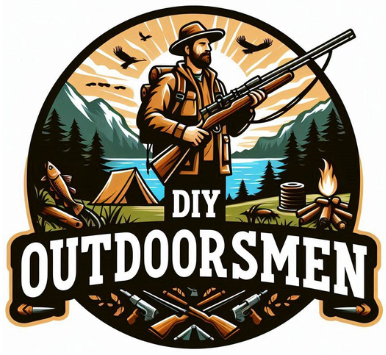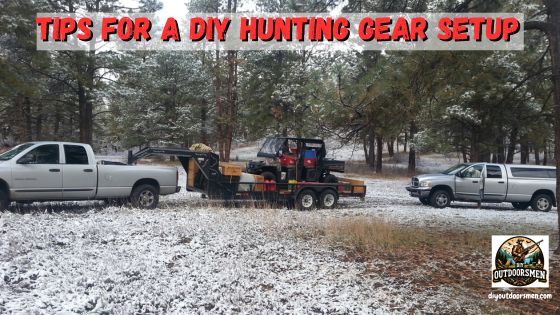Contents
- 1 Optimal Camping Gear for Hunters
- 2 Hunting Gear Tailored for Mobility
- 3 Personal Clothing Essentials for Hunting & Camping
- 4 Tools of the Trade and Essential Hunting Gear
- 5 Hunting Gear Tools and Techniques for Navigating the Wilderness
- 6 Hunting Optics and Communication
- 7 6 Emergency Supplies for DIY Hunting
- 8 DIY Hunting Gear Setup and the Art of Balancing Comfort and Preparedness
If you’re about to embark on a DIY Hunting adventure, your hunting gear setup will be a very important part of your planning and preparation. How, where, and what you plan to hunt will also determine what gear you will need to take along.
QUICK LOOK:
DIY hunting gear setup tips covering everything from campsite selection, tents, sleeping gear, cooking gear, personal gear, weapons, optics, communications, and the tools you’ll need to have a safe, comfortable and successful DIY Hunt. When your gear selection allows you to remain longer in the field comfortably, you’re not just hunting game, you’re making memories. With each return, you’re building a familiarity with your surroundings and the wildlife, which provides you with a richer, more rewarding outdoor adventure.
If you will be camping out on your DIY hunting trip, picking the right spot to set up your camp is more involved than just finding a flat piece of ground. It’s about balancing accessibility with the peace and quiet you crave after a day out in the field.
Campsite Considerations
So, the first thing to keep in mind is proximity. You’ll want to be reasonably close to your hunting area without actually being in it. Spooking game with too much campsite activity is a no-go. Another critical factor is understanding the local wildlife and terrain.
It’s super important to ensure you’re not accidentally setting up shop in the path of local fauna, like deer trails or watering holes. Those are obviously prime hunting spots, not camping ones. Also, think about the lay of the land – look out for natural barriers or uneven ground that might cause trouble after a rain or in the dark.
Access to water is a biggie. If there’s a river or stream nearby, that’s always an advantage. You can fill up those bottles without carrying loads from home, saving both time and effort. Just be careful to purify any water before tanking up.
Shelter from the wind and weather can be a literal lifesaver. Neither sun beating down at noon nor wind howling through the tent at midnight is fun. A spot behind a natural barrier like a thicket or hill can offer protection and a bit of privacy too. Keep in mind, though, the risk of branches or loose rocks that could cause trouble if they came loose in a storm.
Consider the scenic factor, too. Yeah, hunting is first on your agenda, but why not enjoy the views? There’s something unmatched about waking up to a sleepy landscape or seeing stars pop against the night sky. These moments make the hunting-camping combo so memorable.
Optimal Camping Gear for Hunters
Planning a camping trip while on a hunting expedition means adjusting your gear list to fit the priorities of both activities. The trick is to have items that work double duty, keeping your load light but efficient.
- First up, the basics: a good tent is essential. Look for one that’s not just sturdy but lightweight. Having a pop-up model can save tons of hassle, letting you focus more on the hunt than on setting up camp.
- Then there’s sleeping gear. A quality sleeping bag and pad can make the difference between waking up refreshed or groggy. I usually go for something cushy yet compact, often rated for a few degrees colder than I’m expecting because weather in hunting grounds can be so unpredictable.
- Cooking gear shouldn’t be over-thought, yet it’s critical. A portable stove gives you freedom to make a hearty meal after a long day. Bring pots just the right size for your needs – no one wants to lug around a heavy kitchen if you don’t have to. Same with utensils; a multi-use, compact set is a huge plus.
- Let’s talk about lighting. Headlamps are my go-to because they free up your hands after the sun goes down. Having a couple of lanterns around the campsite maximizes safety and comfort and lets you avoid those stubbed toes on the gear you left out.
- Then, those small, often overlooked items come into play. Rope, duct tape, and a first-aid kit are musts; each can be a lifesaver in its own right. A compact, reliable knife doesn’t just cut — it carves, dices, slices, and more, and becomes invaluable in almost every scenario.
- A few final tips: always plan for unexpected weather and extra time afield. Packing a few extra meals or snacks, and that additional layer of clothing, never hurts. This sort of forethought is why seasoned campers thrive in the wild.
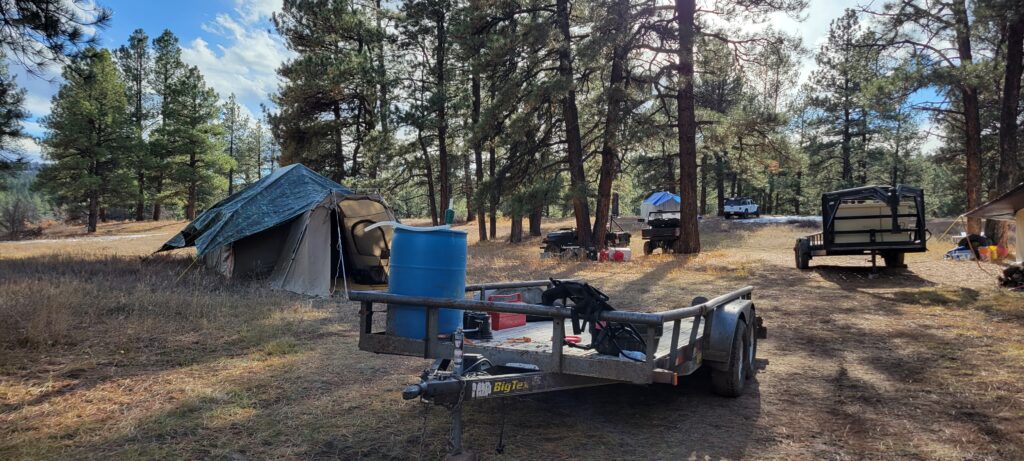
Remember, the best gear isn’t about gadgets. It’s about ensuring you’re prepared, comfortable, and have the essentials to enjoy both the hunt and the natural beauty of your surroundings.
Hunting Gear Tailored for Mobility
Packing light without compromising on essentials is key when you’re on the move hunting. With the run-n-gun technique being my favorite, flexibility becomes your best friend. That means hunting gear that allows you to adapt quickly to different terrains and scenarios is what you’re after.
- Climbing sticks and a saddle setup, for instance, offer the perfect balance between mobility and stability. They provide that little bit of height and advantage in spotting game that you might need when moving through unfamiliar territory. Plus, they’re much easier to carry around compared to your traditional tree stands.
- Let’s talk backpacks. Invest in one that doesn’t just carry your stuff, but does so efficiently. A good pack spreads the load, has compartments to reach essentials like snacks or a map quickly, and stays comfortable throughout the day. I always check for strength and weight — a lightweight, sturdy pack keeps you agile.
- Next, let’s not underestimate the value of compact binoculars. They might not be hi-tech gadgetry but can really up your game by letting you scout without blowing your cover. I find the compact models snug in the pack and ready at a moment’s notice.
- Consider weaponry too. Whether you’re bow or rifle hunting, you have to think about how manageable they are when you’re cutting through rough tracks or scaling up and down slopes. Lightweight, easy to handle, and quick to deploy is the goal here.
- Let’s not skip on mapping out your gear organization either. This means ensuring knives, first-aid kits, and emergency gear are easy to access. Stashing them at the top of your pack or in outer pockets is a practical approach, saving you time when it counts most.
Ultimately, mobility means comfort. It’s about being confident that your hunting gear won’t hold you back, but support you every step of the way as you cover new ground. For those with mobility issues, you might consider an e-bike for hunting. With the right equipment, you’ll find solace in the wild while maintaining the element of surprise on your hunt.
Personal Clothing Essentials for Hunting & Camping
A major compontent of your hunting gear setup is picking the right clothing for hunting trips where camping is involved is about being prepared for all sorts of weather while keeping pack weight in mind. Layering is your best strategy. Not only does it cater to fluctuating temperatures, but it also offers flexibility when you’re scrambling through different terrains.
- Starting with base layers, you’ll want something that wicks moisture away. This could be synthetic or merino wool, both great options for keeping you dry after some strenuous hiking or that quick sprint across a field. Plus, merino wool naturally resists odor, which is a bonus on longer trips.
- Moving up to mid-layers, fleece or an insulated jacket lets you trap heat without excessive bulk. This might come in handy when the sun dips down and that chill starts to settle in. Make sure it’s easy to peel off when things warm up again, though. You want something that packs into itself or stows easily in your pack.
- When it comes to outer layers, waterproof and windproof jackets and pants are a must. You don’t want to be caught out in the rain without a solid shell to keep you dry. There’s nothing worse than the sogginess creeping in and stealing your body heat.
- Footwear can make or break your outdoor adventure. Opt for boots that offer durability and weather resistance. They should be comfortable enough for long treks with good ankle support and grip. Breaking them in before your trip is always a smart move to dodge blisters.
- Beyond these mainstays, pack a hat and gloves for extra warmth and sun protection. You never know when you’ll need to shield against the elements.
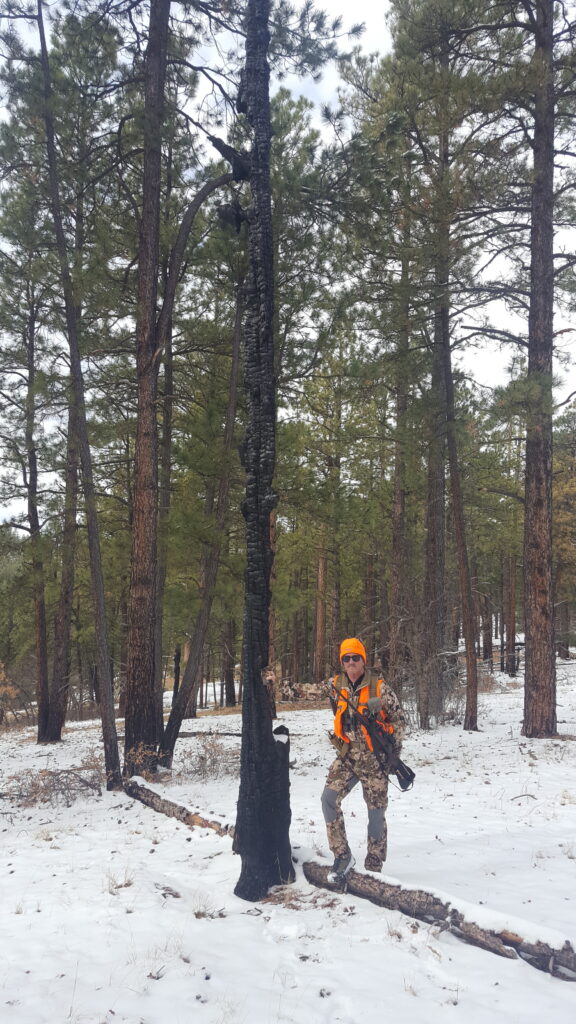
When it comes to hunting gear, clothing isn’t just about comfort – it’s safety. Staying dry and warm can prevent hypothermia and keep your energy up. Every piece you choose should serve a purpose, from the base layer to the boots, aligning with the unpredictable nature of the hunt and the camp.
Tools of the Trade and Essential Hunting Gear
Every hunting expedition stands or falls on the tools you choose to take along. Selecting hunting gear that covers multiple needs without overloading your pack is the name of the game. Every item has to justify its place on your carry list.
- Kick things off with a reliable multi-tool. Compact and versatile, this piece of kit can replace a whole box of tools, from pliers to screwdrivers to wire cutters. It’ll have you prepared for anything from unexpected repairs to simple tasks like slicing lunch.
- Fire starters are crucial. Matches are a given, but a high-quality ferro rod or magnesium fire starter won’t fail in the wind or rain. Pair one with a bundle of dry tinder, even if it’s just some cotton balls soaked in petroleum jelly you’ve prepped ahead, and you’ll have an edge in all conditions.
- Let’s not overlook knives either. I carry both a sturdy fixed blade for heavier tasks and a folding knife for finer work. Keeping them sharp might save a finger or two, so make sure there’s a small sharpener in your kit.
- For emergency situations, a whistle should be standard. Compact and dependable, it can signal distress over long distances when you need help pronto.
- Finally, don’t forget the duct tape. It’s a jack-of-all-trades, from patching up gear and preventing blisters to splinting broken gear or even digging out a splinter in a pinch. Wrap a few feet around your water bottle or tool handle to save space.
These tools form the backbone of a successful hunt and are essential for your hunting gear setup. Each piece is there to ensure you’re ready for whatever the wild throws at you, leaving you to focus on the hunt itself and enjoy your time out in nature.
When you’re out in the wild, solid navigation tools and skills can make all the difference between a successful venture and an aimless wander. It’s more than just getting from A to B; it’s about being confident in unfamiliar territory.
- First up, maps are timeless allies. Don’t just rely on digital – always have a physical map of the area you’re hunting. Pay attention to topographic lines and landmarks you can use for guidance if your GPS decides to play tricks on you. There’s nothing quite like the peace of mind that comes from knowing you can find your way home with just a paper map.
- A GPS device is handy, no doubt. It’s precise, portable, and often features pre-loaded maps. Keep it charged and maybe carry an extra set of batteries. However, I caution against total reliance, as tech in remote areas can be iffy at best.
- Compasses might not have bells and whistles, but paired with a map, they’re foolproof. Getting comfortable with one enhances your confidence tenfold in the field, especially when visibility is low and trails are hard to discern.
- Don’t shy away from using modern apps on your smartphone either. Apps like OnX Hunt offer useful features like marking noted areas and tracking your path. Just make sure to download maps offline so you’re covered when signals fail.
- Remember that landscape features can act as natural markers. Rivers, ridges, and even tree lines can guide your way. Getting familiar with these can ease travel and reduce the risk of losing your bearings.
With the right mix of tools and techniques in your hunting gear setup, navigating through unfamiliar territory becomes a strength rather than a stress. Equip yourself wisely so you can focus on the pursuit and not just finding your way.
Hunting Optics and Communication
Connecting with your surroundings, through both sight and sound significantly enhances the hunting experience. Quality visual aids bring the landscape into sharp focus, making every movement and detail discernible. Quality binoculars, spotting scopes, two-way radios, and satellite communication devices are all important considerations for you DIY hunting gear setup.
- Binoculars are essential, giving you an edge by bringing distant game into clear view without the need for a full-on approach. Choosing a model that’s compact yet powerful ensures you maintain a balance between clear imaging and portability.
- When it comes to scopes, the investment can be game-changing. A good rifle scope doesn’t just boost accuracy, it lets you place shots with precision from distances that might otherwise seem challenging. Finding one with appropriate magnification and clarity for your style of hunting is crucial. It can mean the difference between a successful harvest and a missed opportunity.
- For those willing to embrace modern tech, drones have started to enter the hunting toolkit.They offer incredible scouting capabilities with aerial views of the terrain, which can uncover paths and patterns of game movement you might not otherwise see. Always remember regulations around their use and ensure ethical practices when deploying them in the hunting fields.
- Staying connected doesn’t stop with sight. Reliable communication is vital, especially in remote hunting locations. Walkie-talkies keep you in touch with hunting partners, allowing for coordinated movements and ensuring everyone’s safety. Choose models that offer long-range communication and decent battery life to stay covered through long days in the field.
Whether through enhanced vision or reliable communication, including these aids in your hunting gear can significantly elevate your hunting strategy. They provide a more immersive connection to the wild, while also boosting efficiency and safety.
6 Emergency Supplies for DIY Hunting
Every experienced hunter knows the value of a well-stocked kit of emergency supplies. When you’re out in the wild, far from help, being prepared for unexpected situations is non-negotiable and a must have for any hunting gear setup.
- Start with a solid first-aid kit. It’s not just traditional band-aids and antiseptic; consider additional supplies like a tourniquet and splinting materials too. Learning some basic first-aid skills can enhance the utility of your kit, arming you with the knowledge to handle minor injuries and stabilize more serious ones until help can be reached.
- Include a reliable fire-starting kit, even if you don’t plan on setting up a campfire. The ability to start a fire can be vital for warmth, cooking, and signaling for help. Pack waterproof matches and a high-quality fire starter, along with a small amount of dry tinder.
- Food and water purification systems should never be overlooked. Portable water filters or purification tablets allow you to safely use natural water sources.
- Carry extra high-energy food supplies like nuts, energy bars, and dried fruit to keep your energy up if your trip takes longer than expected.
- Signaling equipment is integral. A whistle is one thing, but consider adding a mirror or small emergency flare. Each works wonders in attracting attention over long distances.
- Don’t forget to include a multi-use emergency blanket. They’re lightweight and compact yet provide crucial thermal insulation in cold environments. Plus, they can be used for shelter or signaling.
Preparing for emergencies allows you to focus on the moment, chasing game and enjoying the wild without the cloud of ‘what if’ hanging over your head.
DIY Hunting Gear Setup and the Art of Balancing Comfort and Preparedness
Packing right for a hunting trip that involves camping is about a careful balance. While the temptation might be to carry the least amount possible, comfort and preparedness ensure you can stay out longer, and with more confidence, despite what the weather or terrain throws at you.
Start with the essentials, but don’t forget about personal comfort. Items like a comfortable camp chair might seem non-essential, but they can make those evenings by the fire so much more enjoyable. You’re in it for both the hunt and the experience, so minor comforts can enhance both.
Remember, adaptability in the wild is crucial. That’s why your clothing, gear, and tools should all offer more than one function if possible. A jacket that’s just as good for standalone insulation as it is as a windbreaker, a knife that serves both hunting and camp utilities—these choices streamline your pack and enhance your readiness.
There’s a certain art in knowing what to pack based on your personal experience. After each trip, take time to evaluate what worked and what didn’t. Adjust accordingly for future trips, dialing in your gear to better meet your evolving needs and the different terrains you’ll encounter.
Ultimately, this balance between being prepared and comfortable reflects in your overall hunting success. When your gear selection allows you to remain longer in the field comfortably, you’re not just hunting game, you’re making memories. With each return, you’re building a familiarity with your surroundings and the wildlife, which provides you with a richer, more rewarding outdoor adventure.
As always, stay safe, enjoy the journey and please try to leave it cleaner than you found it. If you have any comments, questions, ideas, or suggestions please leave them in the comment section below and I’ll get back to you ASAP. You can follow us on YouTube: Man Art Creations for videos of our DIY Adventures.
See More on DIY Tips and Tactics
- 5 Best Public Land Mule Deer Hunting In Colorado

- Bow Hunting For Mule Deer

- Best Public Land Mule Deer Hunting

- Drone-Based Scouting Services For Mule Deer
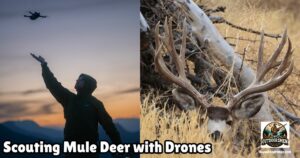
- Late Season Mule Deer Hunting Tips
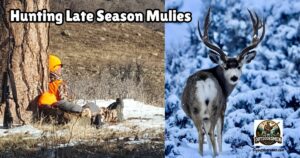
- 8 Tips for Dealing with Hunting Pressure While Mule Deer Hunting
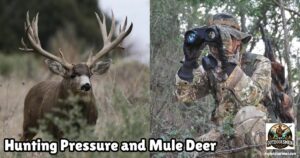
P.S. – Thanks so much for checking out our blog we really appreciate it. Just so you know, we may receive a commission if you click on some of the links that appear on our site. This helps us keep our content free and up-to-date for everyone. We appreciate your support!
